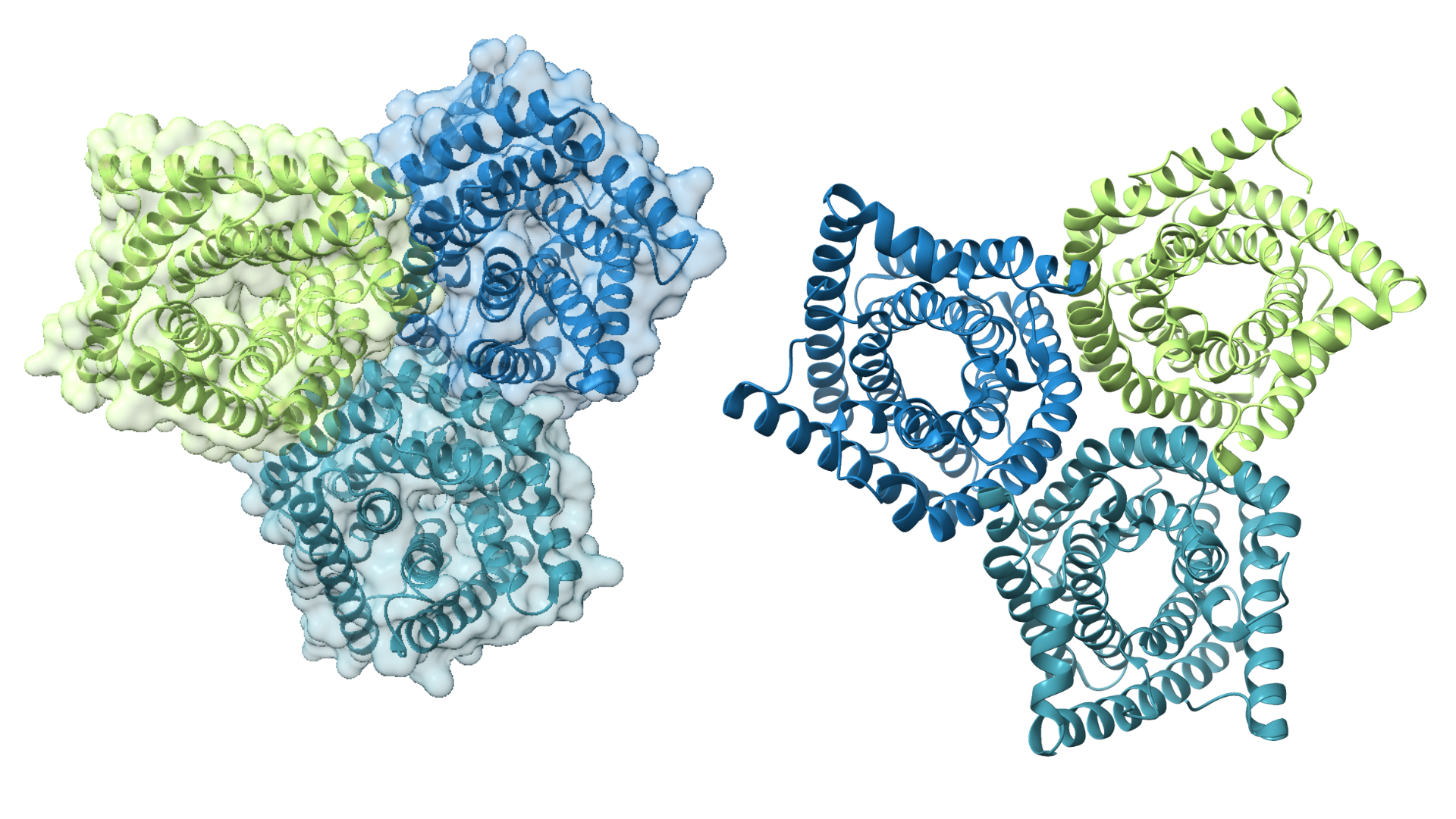3D Protein Structure Determination
Cryo-EM excels in 3D structure reconstruction of biological macromolecules, and can capture structural snapshots of molecules in different conformations or bound to ligands, providing valuable information about their functional states.
Cryo-EM can be used to visualize the structure of membrane proteins, soluble proteins, Ab:Ag complexes, protein degraders, viruses, and more.
Cryo-EM Structure Determination Workflows
NIS provides a streamlined cryo-EM structure determination workflow in order to deliver structure in as little as 4 weeks:
- Feasibility Assessment
- 2D Class Averaging
- High Resolution Data Collection
- Advanced Computational Data Analysis
In addition, specialized workflows including epitope mapping and off target hERG structure determination are available.

Target Classes Solved at NIS
- Protein Degraders & Ternary Complexes
- PROTAC® Degraders
- Molecular Glues
- Protein Degraders & Ternary Complexes
- PROTAC® Degraders
- Molecular Glues
Our experts are skilled in generating high resolution 3D models of challenging molecules, such as membrane proteins, ion channel receptors, GPCRs, antibodies, and emerging viruses.
Understanding the structure of molecules, such as protein structure, is crucial in determining their function. However, obtaining accurate 3D structures from microscopy images can be a challenging and resource intensive process. Electron microscopy, particularly cryo-EM, has gained a reputation for providing images suitable for building 3D reconstructions. In the right hands, these can be used to create highly informative 3D models.
For 3D reconstructions of a heterogeneous sample, such as a liposome or lipid nanoparticle (LNP), cryo-electron tomography is available.
We cryogenically capture multiple configurations of proteins in a thin layer of vitrified ice, then use the microscope to reveal their shape. We take thousands of images of the molecules from multiple angles, average similar projections to create 2D classes and combine these to construct a 3D representation of the structure.
Our advanced data processing capabilities enable us to identify proteins that are in different stages of a biological process, helping unveil how a structure interacts with its environment, including changes to its conformation and function. We have addressed the challenges of high resolution cryo-EM with the computational infrastructure, including processing power and data storage, required to solve 3D structures, so you don’t have to.
We’ve collected data to support more than 300 studies, solving over 150 structures, of which more than 76% were determined at resolutions of 3.5 Å or better.






